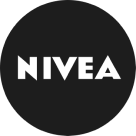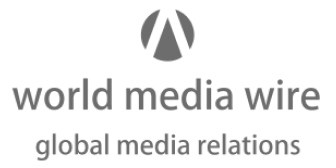Are you still using focus groups to feel the pulse of your audience?
Technological advances are changing how we do business. Sadly, for a lot of marketing professionals, the biggest change was from fax to email, and from print ads to the banner. A lot of old practices remained, in spite of the fact that we have better alternatives today.
? Read Media Monitoring: The Ultimate Guide
Focus groups are one of those 20th century marketing tools we have kept in spite of growing evidence about their shortcomings. They can still be a valuable marketing tool. But for most companies they are expensive, time-intensive and often lead to misleading results.
Why are Focus Groups a Thing of the Past
The main problem with focus groups is that they are a remnant of a time when getting eight people in the same room was the only way you could get data about your consumers.
In today’s world, where we can measure user behavior more precisely than ever, relying solely only on focus groups is ineffective. It’s like digging a tunnel with a shovel because you can’t be bothered to learn how boring machines work.
Research also shows that individuals often respond differently when they are a part of a focus group. They tend to tell marketers what they think they want to hear because they want to present a better version of themselves.
For example, Tina Odom, a shopper-marketing team leader for Unilever, said at a conference that moms told researchers that they are most likely to feed their child a healthy product. Funny thing is that the company’s best sellers were, in fact, high-calorie snack foods.
So why hasn’t the industry switched to something else? Is there anything that can provide, and even surpass, the quality of results you are getting from focus groups?
Of course there is. It’s 2022, and technology is well ahead of the practice of getting a group of people in a room to ask them a predefined set of questions.
The new way to look for consumer insight is both affordable to smaller companies, easier to implement, and gives better results. This type of insight can be achieved through social listening.
Social listening tools collect and analyse public opinion. They help brands around the world make better business decisions based on raw, uninfluenced customer feedback.
Here are the three reasons why social listening should become the next pillar of your market research strategy.
Read 5 Best Social Listening Tools for Political PR Campaigns
Social Listening vs Focus Groups
1. Social listening data is unbiased
Customers are now talking about your brand with their friends on social media.
They are sharing opinions on aspects of your product you may have never even considered. For example, they might voice their concern over health issues. Or it may be just that they prefer plastic mascara bristles over rubber. Or your double cheeseburger over your hamburger.
These customers may never tweet tagging directly your brand. But there are forums, blogs, comments, and online communities where they are engaging.
Your predefined set of questions will probably never reach some of the topics they are covering, and you won’t be able to estimate the relevance of the answer they are giving.
But if 70% of your customers praise your hamburgers on social media, and 70% are complaining about chicken nuggets, isn’t that a pretty good indicator of opinion? More so than your 100 questions about soda offerings?
With social listening, the data you see is the data you get. These may or may not correspond with your intuitive thinking – which is what makes them good datasets.

2. It is a rare opportunity to observe customers in their natural surrounding
Tara Nicolle-Nelson said that your competitors are not a “who”, but a “what”. In her Harvard Business Review article, she said that at MyFitnessPal, her competitors were not similar lifestyle companies like Weight Watchers, but rather “anything that makes it harder to live a healthy life”, including fast food, biology, and mindless eating.
Social listening is a great way for your company to look at what your target group is doing when they are not mentioning your product. With a good setup, you can find out what problems trouble them in their daily lives, to which issues they devote most of their attention, and how they spend their days.
You can learn more about your customers by look at parenting forums to see what questions parents are asking, than by asking them directly about their habits and opinions on child-rearing.
This type of data does not always have to be quantitative, but it can influence your next marketing moves. Think of it as focus groups, only on a million-people scale.
Read How to Use Media Monitoring for Competition Analysis
3. It’s real-time research, as opposed to focus groups
If you are a big company, the perception your customers have about your brand can shift in weeks, even days.
Focus groups may have worked at a time when marketing campaigns were few and far between. But with social media becoming the foremost source of information for consumers, there are micro-level shifts in perception happening every day.
It is part of your job as a marketer to capture these shifts, recognise them and act on them before they snowball. If you are still focused on focus groups, you are going to lag behind.
To Wrap Up
Maybe you tried social listening a while ago, but quit because the amount of data you were getting was insufficient, or the service was expensive. But the features of social listening tools are constantly evolving, and the products are constantly becoming more affordable. A lot of them now include automated sentiment, options to analyse by topics, and other meaningful data. If you are ready to give social listening another go book a demo with Determ – our experts will find the best way to make the most social listening.



